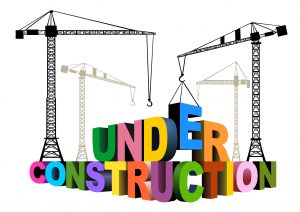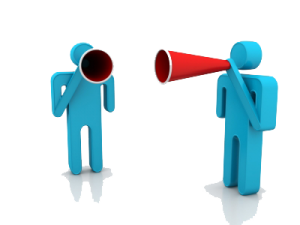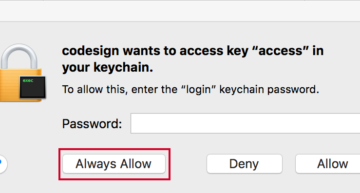
Reduce Website Bounce Rate in 4 Effective Steps
Quick Summary of Contents
- 1 1. Eliminating under construction website design traits.
- 2 2. Increasing the urge and need for speed.
- 3 3. Asking customers for the sale with an effective call-to-action.
- 4 4. Providing unique, value-add content that solves problems
- 5 Closing thoughts
- 6 What are your thoughts and experiences with reducing bounce rate and increasing search engine rankings?
Successful and highly profitable online businesses attain great respect for web analytics.
Web analytics are imperative in determining how successful and effective your website operates and converts customers.
One of the first metrics I check when entering into a consultation or an agreement with a business for search engine optimization or search engine marketing services is the website bounce rate for both individual pages and overall website.
 For those unfamiliar with this term, a website’s bounce rate is the number of visitors that arrive at a website, view one page, and exit without viewing another page within the website.
For those unfamiliar with this term, a website’s bounce rate is the number of visitors that arrive at a website, view one page, and exit without viewing another page within the website.
Website Bounce rate can be calculated as an overall numeric value of a page or entire website as an average, although it is typical to be reported as a percentage.
Bounce rate as a metric is a very instrumental metric to help guide businesses in understanding which pages are effective or ineffective in terms of interesting their visitors.
The typical bounce rate a business will want to strive for is in the neighborhood of 25-40%.
However, I personally have found businesses that are highly profitable with bounce rates as high as 70-80%.
The bounce rate is not a definitive metric to live or die by because it can change based on the industry type or type of business you operate.
So, for example, if you compare a house cleaning company’s website to that of a retail website, be ready to see different bounce rates, as comparing both sites is much like comparing apples and oranges.
Both sites serve different markets, and their websites drive a multitude of non-relational behaviors.
However, a business should compare its website pages to understand what pages are effective and ineffective.
For instance, you could have an effective landing page on your website to drive customer signups with a bounce rate greater than 80%.
The 80% bounce rate could be the fact that the landing page does not have external or internal links to other websites or pages, yet this landing page could be considered a success even with a high bounce rate because it generated a substantial number of new customer signups.
On the contrary, you could have a page with a bounce rate of 30% and not convert customer signups but allow individuals to click on links leading to other internal website pages.
So let me be clear in saying using a bounce rate by itself does not always shed light on problems.
Every bounce rate should have limits and boundaries for how it will be used in terms of making decisions for search engine optimization.
That said, I’m consistently faced with helping businesses understand their website’s bounce rate in relation to their industry bounce rate.
Many conversations have been had about how to effectively reduce a website’s bounce rate while increasing search engine rankings.
Based on my experience, I’m providing 4 steps as guidance to address effectively increasing search engine rankings should you find your website bounce rate to be high, or your website or page to be ineffective based on bounce rate.
1. Eliminating under construction website design traits.
 Horrific or unappealing website design can increase your bounce rate beyond the moon.
Horrific or unappealing website design can increase your bounce rate beyond the moon.
You may think the world of your design, but visitors may categorize your website as one under construction due to the following:
- challenging navigation and site structure
- too many distractions on a page
- hideous color palette
- text too challenging to read
- design and layout not conducive or allowing a seamless flow
An outdated design or one that is unappealing greatly harms a website’s bounce rate and search engine rankings as well.
However, fixing something as simple as a hideous color palette and text being too hard to read can help reduce website bounce rate considerably.
Test different aspects of design (i.e., buttons, colors, text, font, background, foreground, layout, etc.) in regard to your website by using A/B split testing.
Using A/B split testing will allow you to avoid ineffective aspects of design as well as to test various theories of how visitors and customers behave while visiting your website.
Also, performing this action helps start with a somewhat tight benchmarking for website bounce rate.
2. Increasing the urge and need for speed.
Speed is another aspect to consider in regards to reducing your website bounce rate and increasing search engine rankings.
In short, will you generate greater customer growth and revenue if search engine robots and customers cannot load your website due to it being down or unresponsive?
 If customers are visiting your website and it takes more than 2 seconds to load, then you’re in trouble for both website bounce rate and search engine rankings.
If customers are visiting your website and it takes more than 2 seconds to load, then you’re in trouble for both website bounce rate and search engine rankings.
It has long been known that search engines and customers do not take kindly to waiting on slow web pages and servers.
If either the web page or web server is slow, then be ready to see a very high bounce rate and with cause.
One of the many things I ask customers is how fast pages are loading on their website as well as the overall status and health of their web server.
If you are in a shared web hosting environment, I suggest you move to a virtual private or dedicated server.
Personally, I would recommend you use a web hosting provider that offers content management system (CMS) specific web hosting such as InMotion’s web hosting plans:
Yes, these environments are more expensive, yet they are more reliable and exponentially faster.
Such web hosting plans save you more money in the long run as opposed to remaining in a highly unresponsive and downed website environment provided by shared hosting.
In addition, I suggest performing the following ideas as a means to increase website speed:
- using .htaccess or web.config file for your appropriate website environment.
- optimizing and compressing all files (e.g., css, pdf, javascript, image, etc.).
- using file caching.
- preventing hotlinking of images and hacks.
- blocking and securing certain directories and file types.
So in short, be sure you obtain and attain the need for speed to reduce website bounce rate and increase search engine rankings.
3. Asking customers for the sale with an effective call-to-action.
 If you don’t ask customers for the sale, then how will they know you something of great value to offer?
If you don’t ask customers for the sale, then how will they know you something of great value to offer?
Too many times, I visit websites and landing pages where there is no clear call-to-action for what action it is I’m supposed to perform.
Do you want me to buy something or do you want me to sign up for a mailing list or both?
Choose one or the other and be very mindful that too many options can also prove fatal. Some clever call-to-action ideas are having the following:
- calling or signing up for a free consultation.
- signing up for a newsletter.
- signing up for a free giveaway or eBook that upsells products, services or solutions.
- signing up for a mailing list subscription.
- signing up to view a video.
Another recommended approach is always having one clear and concise call-to-action on each page.
Try not to offer more than one option, as multiple options can confuse people or detour conversion.
For instance, not having internal and external links on landing pages is one area to reduce bounce rate and increase conversion, seeing the landing page has copy written for sales conversion and a clear call-to-action visible on the landing page.
Study your website and each page to ensure you offer one call-to-action per page and that your call-to-action clearly states what the customer will receive when performing the call-to-action.
Remember to ask for the sale in a short and concise manner.
4. Providing unique, value-add content that solves problems
I could write a book on value-add content marketing until the cows come home, go back, and come home again.
One of the worst things I’ve seen a client do is to create a website or landing pages specifically optimized and made for search without once ever mentioning the customer or addressing the customer’s challenges.
 And to make matters worse, this client hired writers to write articles based on keywords and keyword phrases without ever considering writing style or voice as it relates to their brand and, most importantly, without ever considering what customer value the articles would attain.
And to make matters worse, this client hired writers to write articles based on keywords and keyword phrases without ever considering writing style or voice as it relates to their brand and, most importantly, without ever considering what customer value the articles would attain.
Nevertheless, they found their bounce rate increased. Search engine rankings decreased, and their website conversion rate was in the toilet.
This charlatan behavior will provide short-term results of traffic and cause long-term consequences such as increasing website bounce rate considerably.
In short, by participating in such activities, you’re allowing your website to be blasted by unqualified traffic when posting useless content to rank well in search engines.
For some, this is the best news they could have heard or music to their ears as they rush out to try it, while others have lived through this nightmare of such a costly decision and have yet to recover from the penguin and panda ninjas heavily penalizing their website.
It’s not worth it to use thin content or any manipulated content serving no purpose but to game search engines.
My suggestion is develop a sound content marketing strategy and providing content that aims to achieve the following:
- adds value and is uniquely written.
- solves a customer’s issue in a clear and concise manner.
- educates the customer in a unique manner that cannot be found anywhere else on the web.
- compels and entices the customer to want to know more.
- encourages the customer to share your content with the masses and for good reason.
- provokes the customer to complete and convert a well-defined and identified call-to-action.
Yes, it may take a while before your content starts to improve in search engine rankings by itself as well as increase your overall website search engine rankings.
But taking the time to create and present effective content will serve your business well and outlive any search engine optimization algorithm update.
Closing thoughts
If you do not know or have identified your website bounce rate, might I suggest you enlist the help of Google Analytics?
Should have already identified your website bounce rate using Google Analytics, then I invite you to read one of my other blog posts written to help you figure out your REAL metrics: Google Analytics REAL-Time On Site & Bounce Rate.
Remember, there are a number of ways to increase search engine optimization while lowering website bounce rate.
But you must also remember that website bounce rate alone cannot be considered without proper context or boundaries when considering the value reported and the effectiveness of the value when representing your website’s overall success and profitability.
Again, it is my personal belief to always strive for a bounce rate less than 40%.
Many stellar websites have a bounce rate of less than 20%, although unheard of for most.
But don’t despair, keep trying and testing as much as you can to keep customers on your website.
There are many other search-safe tactics and techniques you can use to help you lower your website bounce rate.
The appropriate website design and layout, coupled with an optimal hosting environment and effective content that is uniquely written to solve customer problems, will help businesses reduce website bounce rates while increasing search engine rankings across all search engines.
When this happens, I’m willing to bet a company’s conversion rate and profitability will go beyond the moon as the bounce rate returns to Earth.












